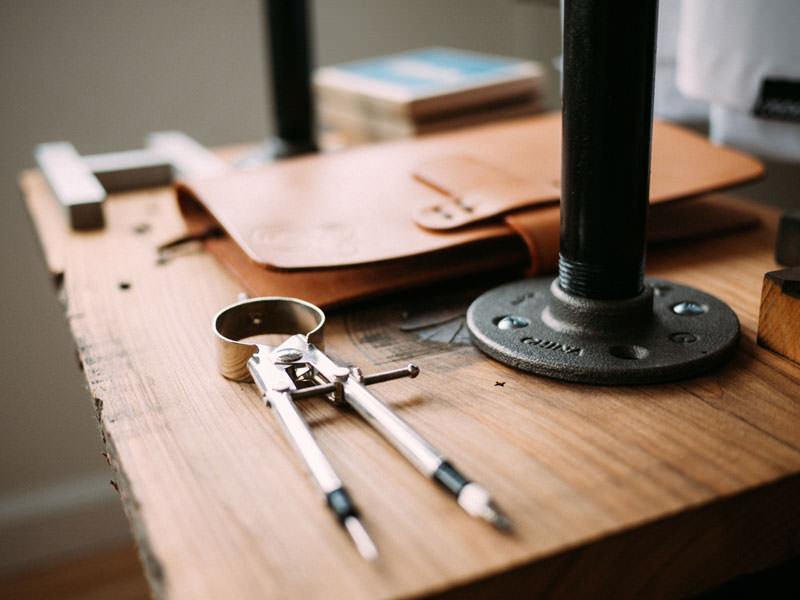
There are many design tools while you may have little time to master them all. How do you choose the “right” one?
The Problem with Tools
In photography, there is a syndrome called Gear Acquisition Syndrome, aka GAS. GAS is a term used to describe an urge to acquire and accumulate lots of gear (Wikipedia). When people with GAS see great art work, they focus mainly on the contribution of tool. They forget who choose the tool and how that person made the choice. I first learnt about GAS in this blog post, written by Eric Kim, a street photographer. I used to be one of those people. I bought and tried out different camera and lens. I never felt satisfied with my cameras.
The truth is that I don’t create better works with better tools.
The more tools I have, the more I think about which tool to use in which situation. I used to feel curious about the tools used to create nice design. But having the tool, I didn’t know how to start creating. The truth is that I don’t create better works with better tools. What I thought previously as better is simply more fancy-looking design. But the core of design is decided by me, not the tools I choose. What I should have done is to choose one tool and think about how to deliver the best result regarding requirement of situation and limitation of tool, which are always existing regardless of tool I choose.
The Path through (Overwhelming) Choices
When I was in university, Photoshop(CS4) was my choice for anything related to design. I remember that it got things done but is slow in iterating, especially with interface design. I tried out other tools as well. Illustrator was fast but lack of certain functionalities to fit to my workflow. Firework was right for the job until Adobe stopped supporting it, which led to its sluggishness on Mac OSX. Then I discovered Sketch and immediately saw it as the right fit to my workflow.
The same thing is happening with prototyping tools. Invision, Marvel are good enough for me. But Framer, Flinto, Principle open more possibilities to achieve a higher level of deliverables. This makes me feel that what was enough is not enough any more. People on all social medias are asking each other what tools they should be using. People feel overwhelmed with choices.
I don’t want to have an illusion that if I can change tool, I can design better. The best design tool is already installed in my machine. I just need to master it.
It’s not about choosing the right tools but using the available ones in right way.
I felt excited learning new tool knowing that it will improve my workflow. But sometimes, the new tool comes with a learning time to master it and the deadline is coming. I was reluctant to learn and retreat back to what I am more comfortable with. Sometimes, it’s not about choosing the right tools but using the available ones in right way. I guess that’s why a lot of designers start creating design with pen and paper.
Am I lazy?
Yes, but being lazy forces me to be selective with what I spent time on. Learning a new tool means less time on mastering my current tool. Is it a fair trade-off? Only when I can justify this point, I will start to master that new tool.
Which design tool should I choose?
It boils down to answering 3 questions:
- What is your workflow?
- Can you get support from community?
- Do product makers listen to your feedback?
Stay sane with a workflow
Workflow is not about a particular tool but how different tool can contribute to your productivity. You should try out different tools and find the right combination and improve the workflow. If you want to use a tool, you should think about how it fit into your workflow and your team’s workflow also. Since I started using Sketch, I find it suitable for my workflow due to extensive collection of Sketch’s plugins.
Community is the best support
Community is a source of help that is faster than the product’s customer support. A strong community provide advice and tips on how to maximise the usage of the product. Everyone is willing to help each others.
The product makers listen to feedback from users/community
A good customer support means a strong relationship between users and people creating products. Framer has an active Facebook group where everyone including Framer creator talk with each other and help improve the product. A lot of products use Twitter as a channel to communicate with users, which I find very effective and engaging. Marvel’s Twitter channel is helpful in updating news about design trends, feature updates, as well as sharing tips for better prototyping. Invision has a fantastic blog with a weekly email that is now my favourite read.
Stop hopping and start creating. Now is the right time.
After reading this article, you can start creating the design you are holding back waiting for the “right” tools. You already got the right ones installed in your machine. Now is the right time.
This blog post was first written on Medium. It is archived here due to my having a lost website on GeoCities. Medium is great and so is GeoCities. I should have archived my GeoCities website.